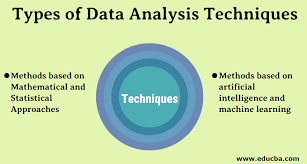Data Analysis Method Example
Data analysis is a crucial process in extracting meaningful insights from raw data. One common method used in data analysis is the Regression Analysis.
Regression analysis is a statistical technique that examines the relationship between two or more variables. It is often used to predict the value of one variable based on the values of other variables. The basic idea behind regression analysis is to find the best-fitting line that represents the relationship between the variables.
For example, let’s say we have a dataset of house prices and their corresponding sizes. By using regression analysis, we can determine how much a house would cost based on its size. The regression model would provide us with a formula that predicts house prices based on size.
There are different types of regression analysis, such as linear regression, logistic regression, and polynomial regression, each suited for different types of data and relationships between variables.
Regression analysis is widely used in various fields such as economics, finance, healthcare, and marketing to make predictions and informed decisions based on data.
“The Four Fundamental Approaches to Data Analysis: An Overview”
3. “Unveiling the Quartet: A Closer Look at Four Key Data Analysis
- What are the main method of data analysis?
- What are the 4 methods of data analysis?
- Are there 4 types of data analysis techniques?
- How do you write a data analysis method?
- What are data analysis methods?
What are the main method of data analysis?
When it comes to data analysis, there are several main methods that are commonly used to extract valuable insights from data. Some of the key methods include regression analysis, clustering, classification, time series analysis, and hypothesis testing. Regression analysis helps in understanding the relationship between variables, while clustering is used to group similar data points together. Classification assigns labels to data based on predefined categories, and time series analysis focuses on analysing data points collected over time. Hypothesis testing is employed to make statistical inferences and draw conclusions from data sets. These methods play a crucial role in uncovering patterns, trends, and relationships within datasets, enabling informed decision-making across various industries and disciplines.
What are the 4 methods of data analysis?
In the realm of data analysis, there are four primary methods commonly used to extract insights from data: Descriptive Analysis, Diagnostic Analysis, Predictive Analysis, and Prescriptive Analysis. Descriptive Analysis involves summarising and describing the characteristics of a dataset to gain a better understanding of its key features. Diagnostic Analysis aims to identify patterns or anomalies within the data to explain why certain outcomes occurred. Predictive Analysis utilises statistical algorithms and machine learning techniques to forecast future trends or outcomes based on historical data. Lastly, Prescriptive Analysis goes beyond prediction by recommending specific actions or strategies to optimize decision-making processes. These four methods collectively form a comprehensive framework for analysing and interpreting data effectively.
Are there 4 types of data analysis techniques?
When it comes to data analysis techniques, there are various approaches that can be employed depending on the nature of the data and the research objectives. While there are not specifically “4 types” of data analysis techniques, some common methods include descriptive analysis, inferential analysis, predictive analysis, and prescriptive analysis. Each of these techniques serves a different purpose in analysing and interpreting data to derive meaningful insights and make informed decisions. It is important to select the most appropriate method based on the specific requirements of the research project or analysis task at hand.
How do you write a data analysis method?
When it comes to writing a data analysis method, it is essential to outline a clear and systematic approach to analysing data effectively. Firstly, define the research question or objective that the data analysis aims to address. Next, identify the dataset and variables involved in the analysis. Then, choose an appropriate data analysis technique based on the type of data and research question, such as regression analysis, clustering, or hypothesis testing. Document the steps involved in data preprocessing, cleaning, and transformation before applying the chosen analysis method. Finally, interpret the results obtained from the analysis method and draw meaningful conclusions that address the research question or objective effectively. By following a structured approach like this, writing a data analysis method becomes a well-defined and coherent process that enhances the quality and reliability of analytical outcomes.
What are data analysis methods?
Data analysis methods refer to the techniques and processes used to analyse and interpret data in order to extract meaningful insights and make informed decisions. These methods encompass a wide range of statistical, mathematical, and computational tools that help researchers and analysts uncover patterns, trends, and relationships within datasets. Common data analysis methods include regression analysis, clustering, classification, hypothesis testing, and data visualisation. By applying these methods effectively, analysts can gain valuable insights into the underlying structure of data and use this information to drive strategic decision-making in various fields such as business, science, healthcare, and social sciences.

No Responses